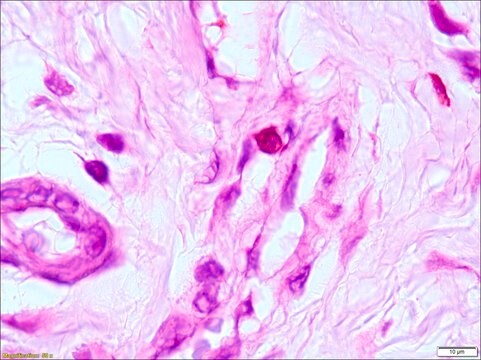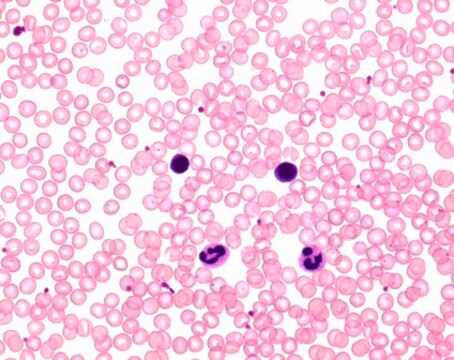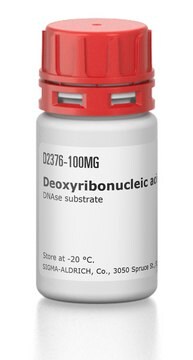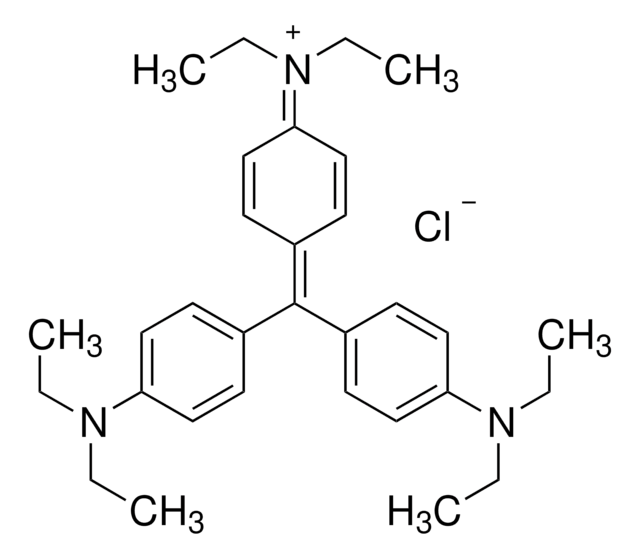M8884
Methyl Green
~85% purity, powder
Sinónimos:
Ethyl Green
About This Item
Productos recomendados
Nombre del producto
Methyl Green, zinc chloride salt, ~85%
Nivel de calidad
Ensayo
~85%
Formulario
powder
composición
Dye Content, ≥83%
técnicas
titration: suitable
color
red to very dark red
pH
0.2-1.8, yellow to blue
mp
>300 °C (lit.)
solubilidad
water: 1 mg/mL
εmax
>11100.00 at 417-425 nm in water at 0.005 g/L
>16000 at 311-319 nm in water at 0.005 g/L
>60000 at 626-634 nm in water at 0.005 g/L
aplicaciones
diagnostic assay manufacturing
hematology
histology
temp. de almacenamiento
room temp
cadena SMILES
[Cl-].[Br-].Cl[Zn]Cl.CC[N+](C)(C)c1ccc(cc1)\C(c2ccc(cc2)N(C)C)=C3/C=C\C(C=C3)=[N+](\C)C
InChI
1S/C27H35N3.BrH.3ClH.Zn/c1-8-30(6,7)26-19-13-23(14-20-26)27(21-9-15-24(16-10-21)28(2)3)22-11-17-25(18-12-22)29(4)5;;;;;/h9-20H,8H2,1-7H3;4*1H;/q+2;;;;;+2/p-4
Clave InChI
RRKSQWOQZFIQKW-UHFFFAOYSA-J
¿Está buscando productos similares? Visita Guía de comparación de productos
Descripción general
Aplicación
Calidad
Nota de análisis
Palabra de señalización
Danger
Frases de peligro
Consejos de prudencia
Clasificaciones de peligro
Aquatic Chronic 2 - Eye Dam. 1 - Skin Corr. 1B - STOT SE 3
Órganos de actuación
Respiratory system
Código de clase de almacenamiento
8A - Combustible corrosive hazardous materials
Clase de riesgo para el agua (WGK)
WGK 3
Equipo de protección personal
dust mask type N95 (US), Eyeshields, Gloves
Elija entre una de las versiones más recientes:
¿Ya tiene este producto?
Encuentre la documentación para los productos que ha comprado recientemente en la Biblioteca de documentos.
Los clientes también vieron
Nuestro equipo de científicos tiene experiencia en todas las áreas de investigación: Ciencias de la vida, Ciencia de los materiales, Síntesis química, Cromatografía, Analítica y muchas otras.
Póngase en contacto con el Servicio técnico












